Sustainability, and specifically sustainable travel, is a hot topic for 2022 and the foreseeable future. The subject is of growing concern to both the travel industry and corporate boardrooms as companies across the globe take action to make their business travel programs more sustainable. But the problem is very complex, so where should a business start? To help, Travel Maestro has a synopsis of the informative presentation by Erin Singleton, Senior Director, Marketing, Advito & Hotel Solutions (BCD consulting arm) given to the Virginia Business Travel Association (VBTA) September 2022 meeting.
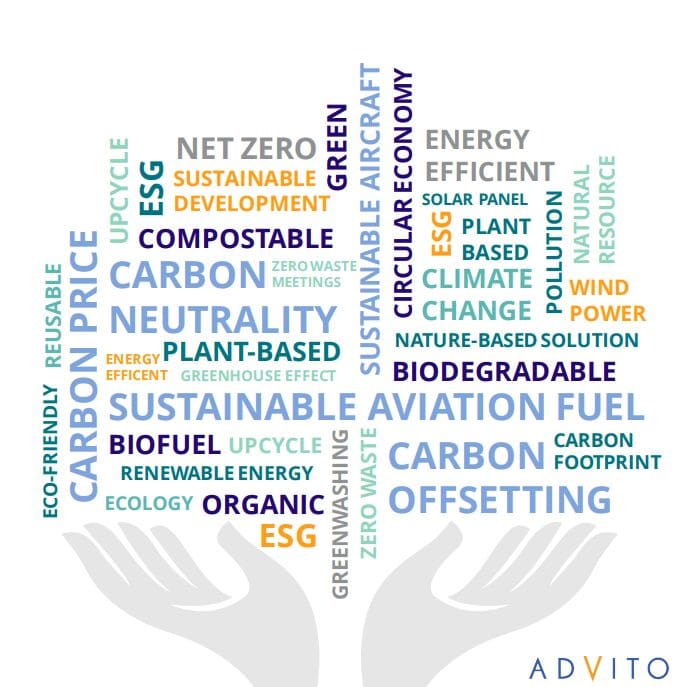
Where are we now?
Scientists have determined that decreasing carbon emissions by 50% by 2030 is crucial. Without new climate policies, global warming could reach between 3.3° to 5.1° in 2100. Furthermore, we only have three years left to reach peak emissions and retain the possibility of keeping global warming below 1.5°.
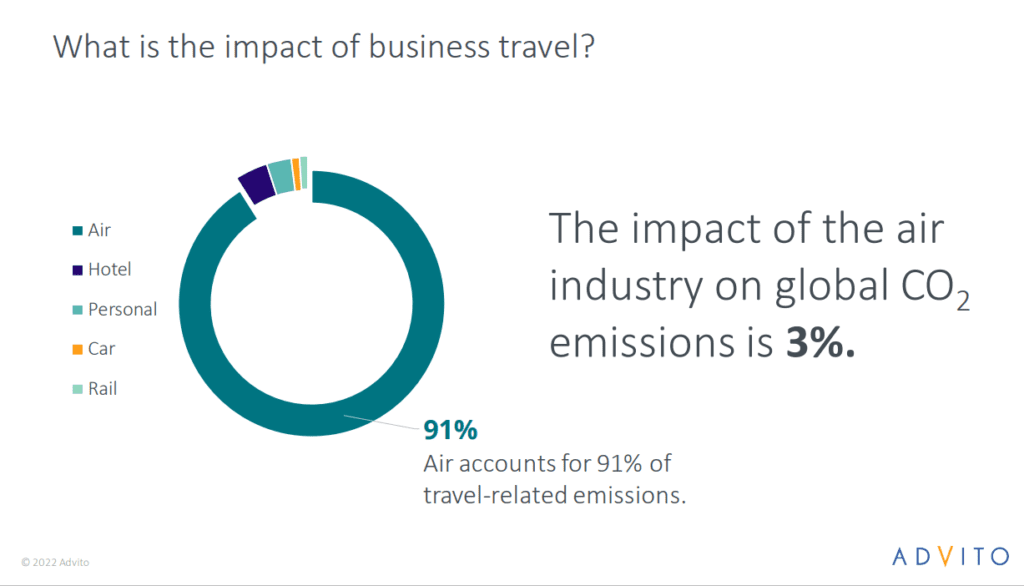
Although aviation-related carbon emissions accounted for only 3% of global emissions in 2019, if they continue increasing at the current rate, they will account for 25% of global emissions by 2050. Therefore, a good starting point for companies wishing to build a more sustainable business travel program is measuring current CO2 emissions.
Build a holistic strategy.
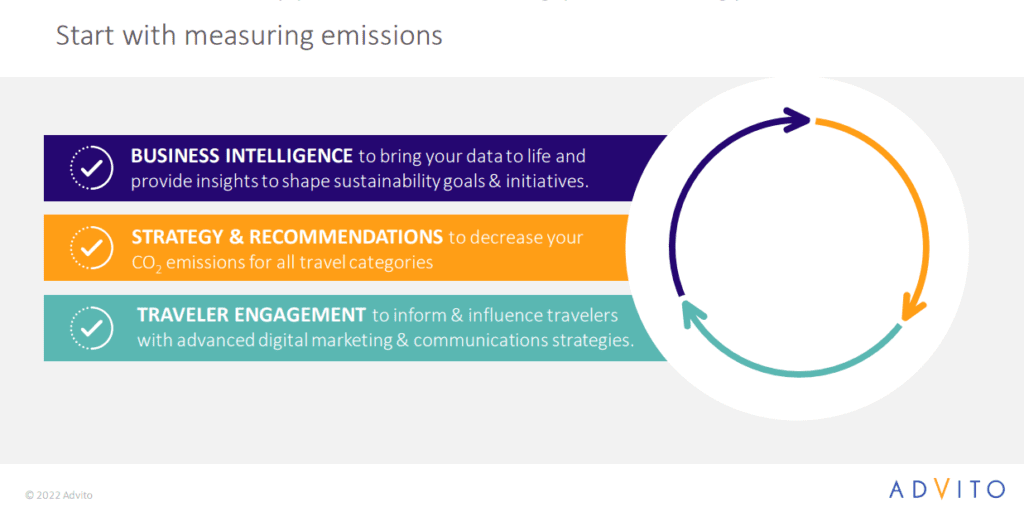
Developing a more sustainable business travel program requires that the organization integrate the elements of business intelligence, strategy, and traveler engagement to facilitate the overall strategy of reducing carbon emissions.
First, apply business intelligence to inform and shape sustainability goals and initiatives. Having an accurate view of the company’s CO2 travel footprint is key to building a sustainable travel program.
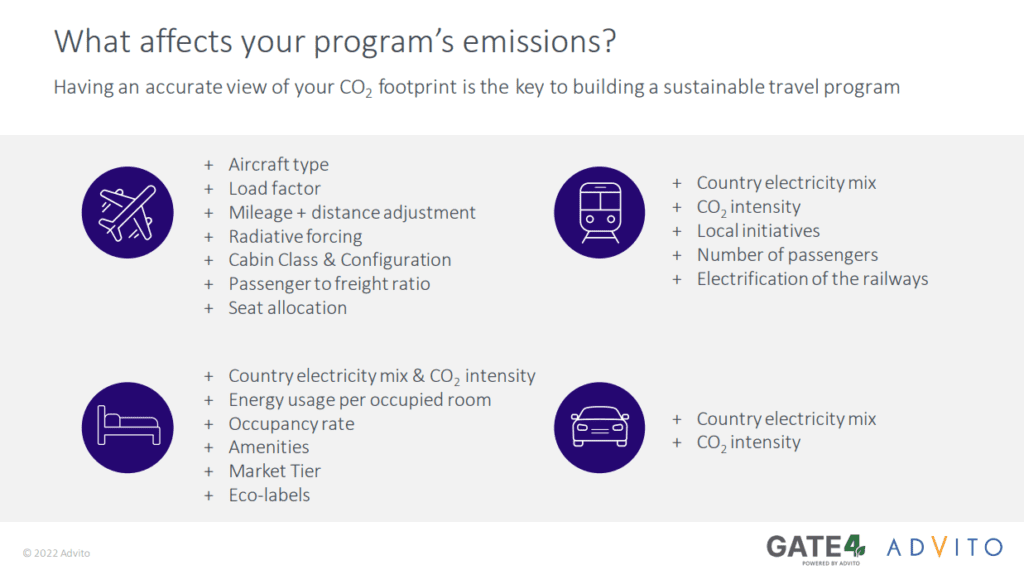
Next, create strategy and recommendations to decrease carbon emissions for all travel categories. Guide booking decisions by putting the right information in front of travelers at the point of sale. Educate travelers on the environmental effects of business travel and give them the resources to make informed decisions.
Utilize traveler engagement to influence travelers with digital marketing and communications strategies. Align messages to multiple channels: online booking tool, mobile messaging, company intranet, social media, newsletters, and signage.
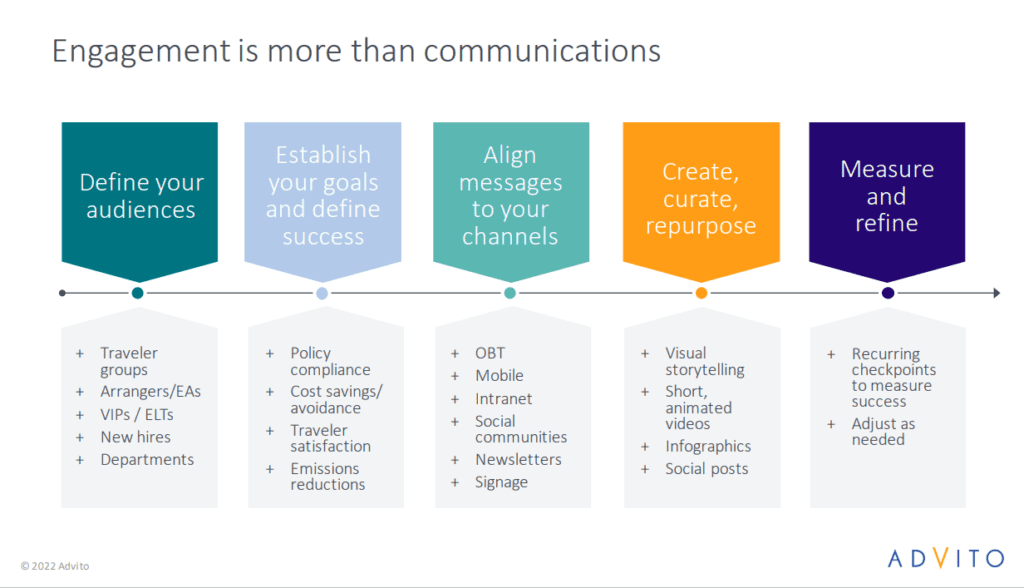
Four Steps to Building a Sustainable Travel Program
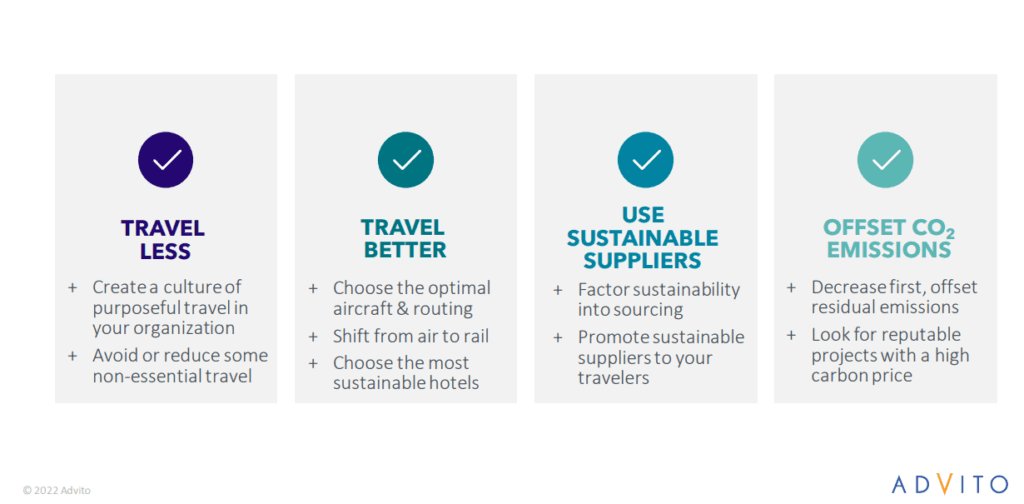
Travel Less
To limit global warming to 1.5°C, we must achieve a 50% decrease in emissions by 2030 and an 85% decrease by 2050 (relative to 2019). This represents a decrease in emissions of 6.1% per year, every year. By creating a “stay or go” framework, business travel programs can help employees travel with purpose. That framework should address three factors – environmental, social, and governance. It can help employees decide whether to take a trip or not based on the environment, help them understand when to travel and why, define goals that matter to the organization, and justify the travel.
Travel Better
New generation aircraft are on average 20%-25% more carbon efficient. For example, depending on the carrier and aircraft type, the difference on one round trip flight in business class from New York to London could be 3.4 tons vs 4.4 tons of CO2 emissions. The route chosen can also make a significant difference.
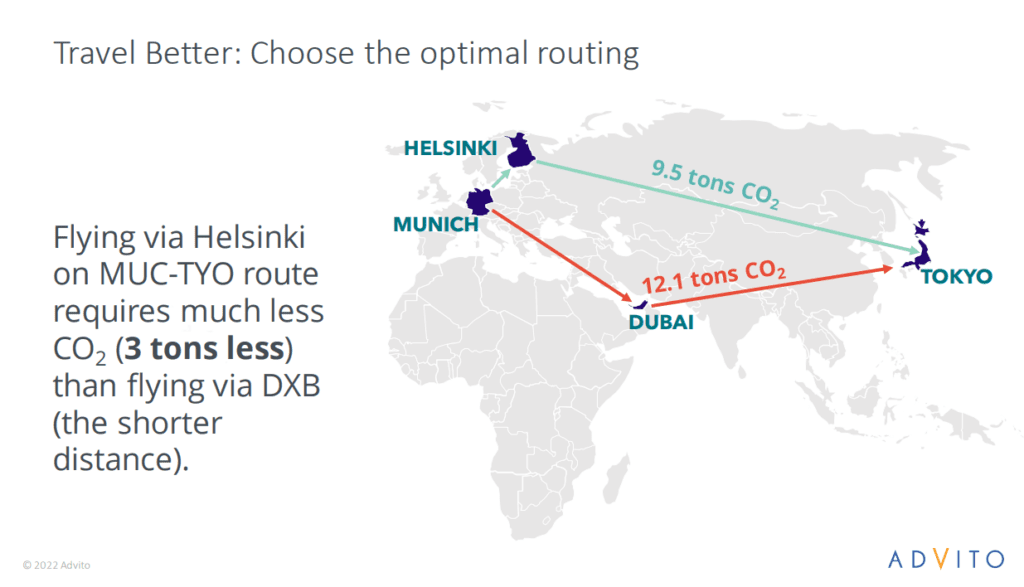
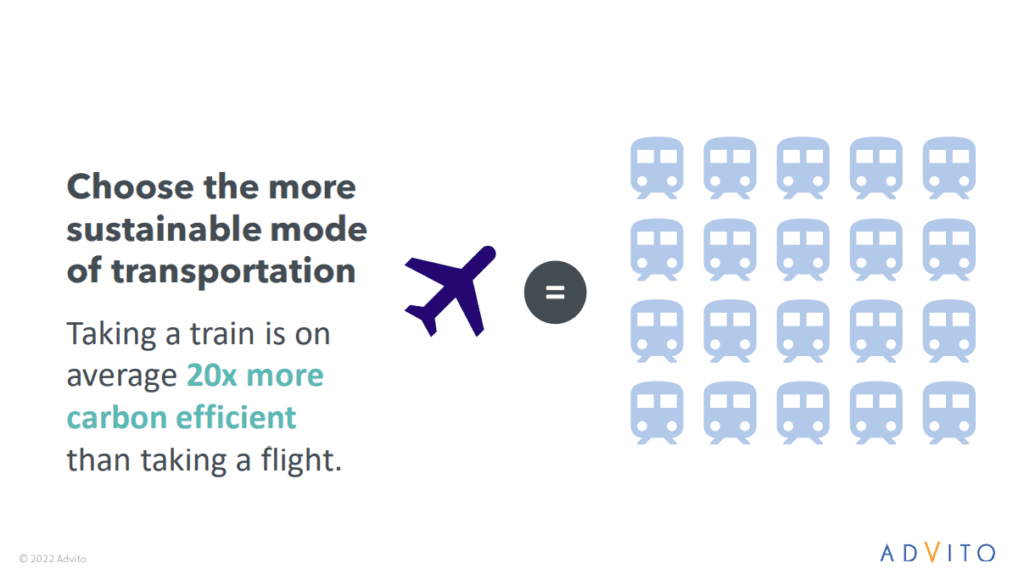
Use Sustainable Suppliers
Accommodations produce far fewer carbon emissions than transportation but making improvements still impacts a sustainable business travel program. Factors like energy and water consumption reduction, waste and resource management improvement, and how properties source their food and other vendors are also important.
Learning about hotel eco-labels and which ones are credible is a great start. Shifting share to those eco-certified hotels can make an impact on a program’s overall footprint, and understanding your suppliers’ sustainability initiatives helps organizations make better decisions about preferred relationships for sustainable business travel programs.
Offset CO2 Emissions
Offset projects are certainly worth consideration; however, they need careful analysis before adoption. It’s a common misconception that offsetting will cancel out all travel-related emissions. The fact is that only 15% off offsetting projects result in an actual emissions decrease. For example, it would take a tree 35-45 years to absorb the carbon emissions from one flight from NY to London and no one can guarantee that trees planted will be there long enough to fulfill that goal. There is also an issue of double counting the benefits of a project. Are both the government where the reforestation takes place and the traveler who buys the trees claiming the offset?
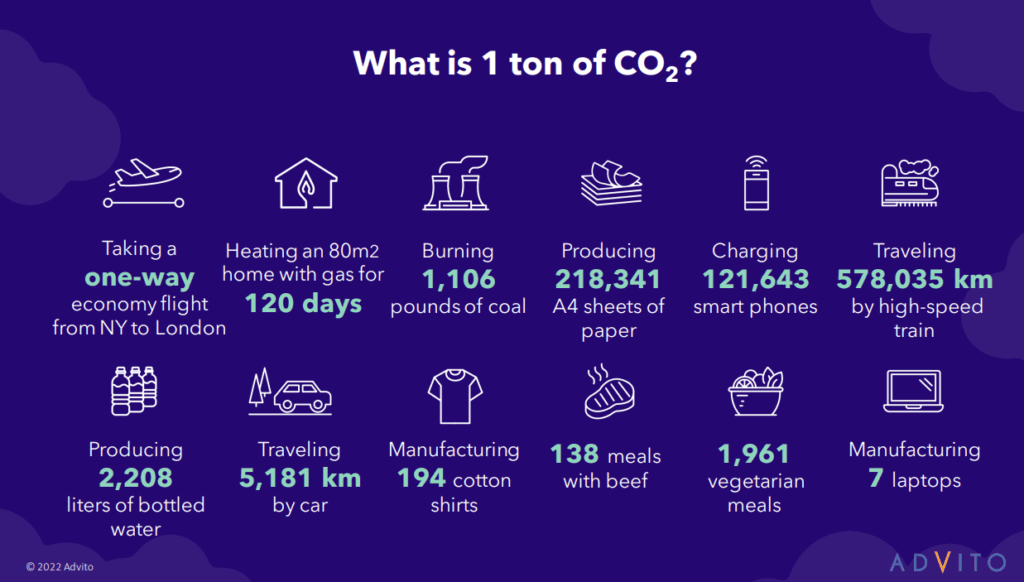
Building a more sustainable business travel program is an ongoing process. It can seem daunting, but we encourage organizations to not allow complexity to scare them off from starting to take action. No step is too small. For help creating a strategy or discussing your progress, contact the Covington Account Management team any time.
Source: Content and graphics provided by Advito.






Leave a Reply